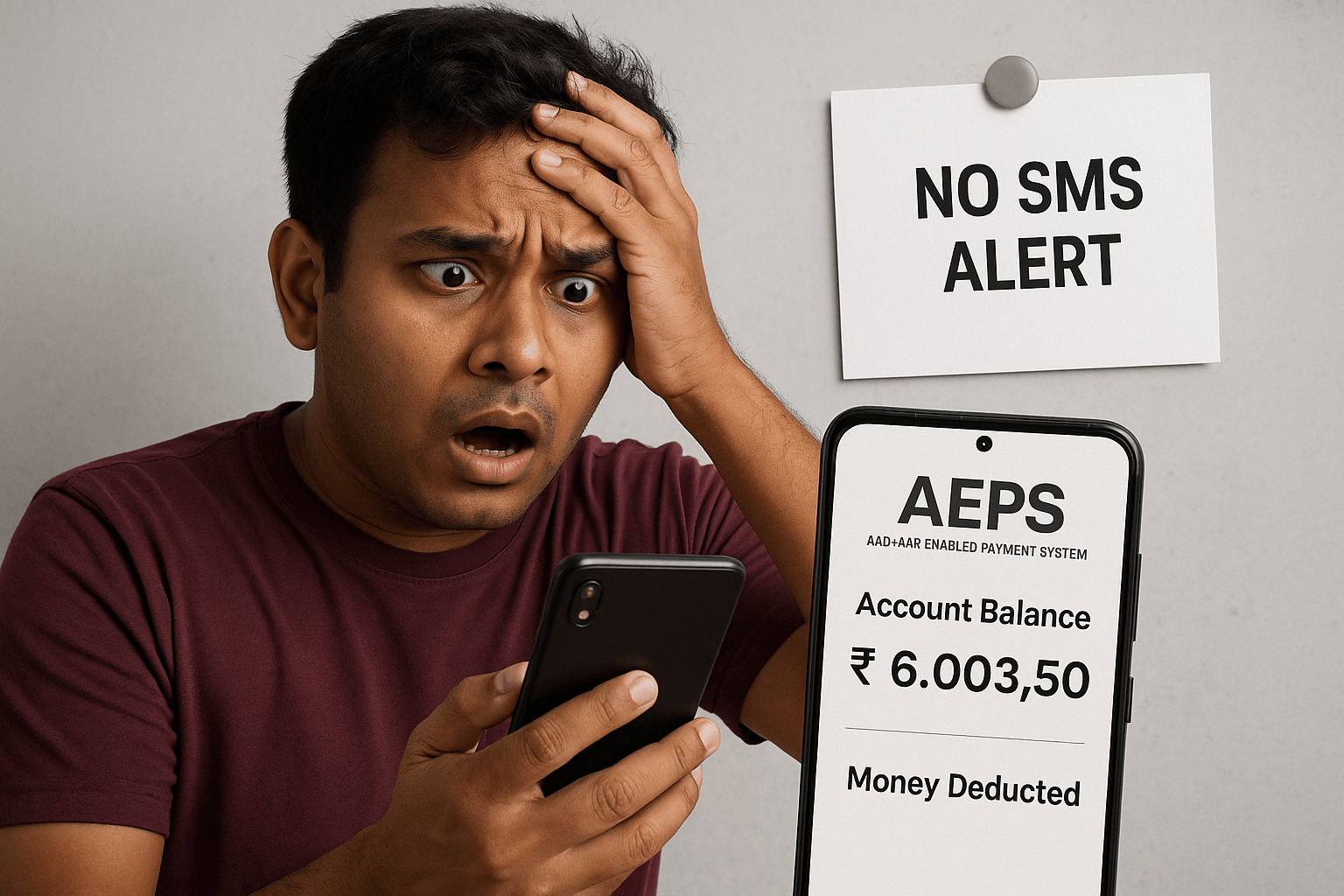Imagine checking your AEPS (Aadhaar Enabled Payment System) account balance only to (fraud) find that money has been deducted—but you never received an SMS alert. Panic sets in. Was it a technical glitch, a banking error, or worse, fraud?
This situation is more common than you might think. Many users report unauthorized AEPS transactions without SMS notifications, leaving them confused about how to recover their money. If this has happened to you, don’t worry—this guide will walk you through the step-by-step process to report fraud, file a complaint with your bank, and escalate the issue to the RBI if needed.
Why Did Money Get Deducted from My AEPS Account Without an SMS?
Before jumping to conclusions, let’s understand possible reasons:
-
Technical Delays in SMS Alerts
-
Sometimes, banks experience delays in sending transaction alerts due to network issues.
-
The SMS might arrive later or not at all if your mobile number isn’t updated in the bank’s records.
-
-
Fraudulent Transactions (AEPS Scams)
-
Cybercriminals can misuse your Aadhaar-linked bank account via biometric cloning, phishing, or malware attacks.
-
If someone accessed your Aadhaar details, they could withdraw money via AEPS without OTP/SMS authorization.
-
-
Banking System Errors
-
Rarely, banks may mistakenly deduct money due to a glitch during AEPS transactions.
-
-
AEPS Transaction Limits & Rules
-
Unlike UPI or card payments, AEPS doesn’t always require an OTP for small withdrawals, making it vulnerable to misuse.
-

Step-by-Step Process to Recover Fraudulently Deducted AEPS Money
Step 1: Verify the Transaction
-
Check your bank statement (via net banking, mobile app, or passbook) to confirm the deduction.
-
If the transaction is unfamiliar, note down details like:
-
Transaction ID
-
Date & time
-
Amount deducted
-
Merchant/agent details (if available)
-
Step 2: Contact Your Bank Immediately
-
Call the bank’s customer care or visit the nearest branch.
-
Report the unauthorized AEPS transaction and request a chargeback (reversal).
-
Ask for a complaint reference number—this is crucial for further escalation.
Step 3: File a Written Complaint with the Bank
-
Submit a formal written complaint (email or letter) detailing:
-
Your account details
-
Unauthorized transaction details
-
Request for refund
-
Attach supporting documents (bank statement screenshot, ID proof)
-
Step 4: Escalate to the Banking Ombudsman (If Bank Doesn’t Respond)
-
If the bank doesn’t resolve your complaint within 30 days, escalate to the RBI Banking Ombudsman:
-
Visit https://rbi.org.in → “Complaints” section.
-
File an online complaint under “Unauthorized Electronic Transaction”.
-
Upload your complaint details and bank’s response (if any).
-
Step 5: File an FIR for Cyber Fraud (If Suspected Theft)
-
If fraud is confirmed, file an FIR at the nearest cybercrime police station.
-
Provide all transaction details and bank correspondence.
-
This strengthens your case for a refund.
How to Prevent AEPS Fraud in the Future?
-
Lock Aadhaar Biometric Authentication
-
Visit UIDAI’s website → “Lock/Unlock Biometrics” to prevent unauthorized AEPS withdrawals.
-
-
Enable SMS Alerts & Regularly Check Statements
-
Ensure your mobile number is linked to your bank account.
-
-
Avoid Sharing Aadhaar Details
-
Never share your Aadhaar number or OTP with unknown agents.
-
-
Use AEPS Only at Trusted Micro-ATMs
-
Avoid using AEPS at unfamiliar or suspicious locations.
-

Frequently Asked Questions (FAQs)
1. Can I get my money back if it was deducted via AEPS fraud?
Yes! RBI’s “Zero Liability Policy” protects customers if they report fraud within 3 days. Even after that, banks must refund money if fraud is proven.
2. Why didn’t I get an SMS for the AEPS transaction?
Possible reasons:
-
Your mobile number isn’t updated in bank records.
-
The fraudster used a different number.
-
SMS gateway failure.
3. How long does the bank take to refund fraudulently deducted money?
Banks typically resolve complaints within 10-45 days, depending on investigation complexity.
4. Is AEPS safer than UPI?
No. Unlike UPI (which requires OTP), AEPS relies on biometrics, making it riskier if your Aadhaar details are leaked.
Final Thoughts
Discovering money deducted from your AEPS account without an SMS alert can be alarming, but quick action increases your chances of recovery. Follow the steps above—report to the bank, escalate to RBI if needed, and secure your Aadhaar biometrics to prevent future fraud.
Stay vigilant, and always monitor your transactions!
Disclaimer
This post is for educational purposes only. If you believe any content here violates your rights, please visit our DMCA page for removal requests. Always verify financial advice with your bank or a legal expert.
